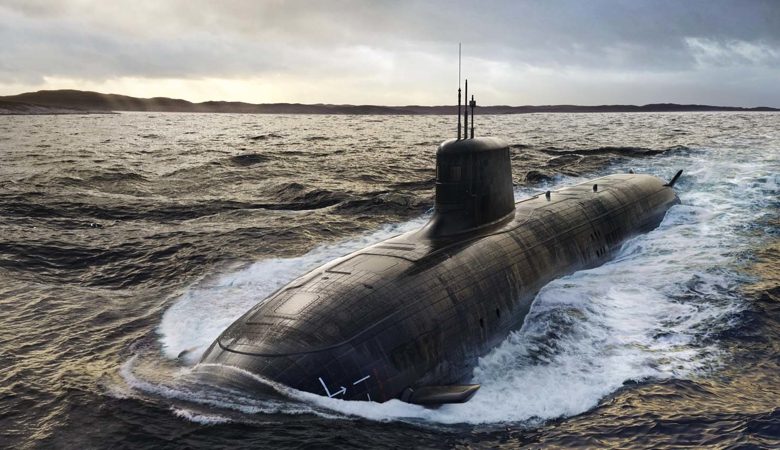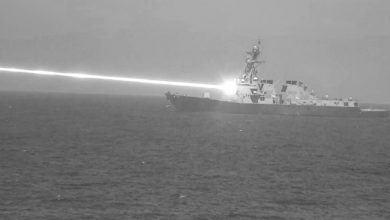Analysis: AUKUS year 2; gauging gains and goals

Detractors of this accord have depicted AUKUS as coalition potentially capable of upsetting established security framework in Asia and Indo-Pacific region.
On Sept. 15, 2021, the trilateral security partnership between Australia, the United Kingdom, and the United States, known by its acronym AUKUS, was formally unveiled by US President Joe Biden, Australian Prime Minister Scott Morrison, and British Prime Minister Boris Johnson. The inaugural strategic maneuver of this security consortium involved the commitment to put together a navy made up of eight nuclear-powered submarines designated for Australia. Remarkably, this marked the first instance since 1958 wherein the US had consented to share its nuclear submarine technology with foreign nations. In a subsequent development in April 2022, the tripartite alliance unveiled a secondary initiative: Collaborative efforts aimed at advancing hypersonic technology weaponry.
Examining the AUKUS alliance within a global context unveils three primary implications. Firstly, an impending emergence of a substantial “grand maritime alliance”; secondly, an evolving transformation of the US military alliance system into an integrated entity encompassing military, scientific, and industrial dimensions; and thirdly, a trajectory where the future development objectives of the US and its allied military, scientific, and industrial collective will converge towards consolidated strategic capabilities and unified deterrence, signifying the initiation of a bloc-based global order with two of its foremost allied nations, the UK and Australia.
Nevertheless, in the past two years since its declaration, AUKUS has sparked debates and discrepancies. Detractors of this accord, which aligns the UK and the US with Australia’s pursuit of nuclear-powered submarines, have depicted it as a coalition potentially capable of upsetting the established security framework in the Asia-Pacific and Indo-Pacific regions. The introduction of nuclear-powered submarines is viewed as a catalyst for an arms race, as critics argue, thus posing the possibility of the eventual nuclear armament of Australia’s future naval vessels.
– AUKUS and geopolitical chessboard: China and Russia dynamics
As it is well established, the AUKUS pact elevates the Australia-UK-US partnership to a heightened echelon, aligning the military, scientific, and industrial domains and exemplifying a blueprint for an innovative ‘maritime alliance.’ However, the enhanced cohesion within this alliance not only underscores a notable departure from China but also challenges Beijing’s collaborative ventures such as the Belt and Road Initiative, China-Pakistan Economic Corridor, Global China Initiative, BRICS (Brazil, Russia, India, China, and South Africa, soon to include six more members), and the Shanghai Cooperation Organization. The objective is to reconfigure the defense industry chain in a manner that reduces dependence on China, thus assuming a pioneering role in the recalibration of global relations.
Given the unequivocal motive, the AUKUS agreement represents a perilous escalation in the Western world’s ongoing competition with China. A decade ago, the US unveiled its “Asian pivot,” signifying a strategic reorientation of its military and naval assets toward the Asia Pacific. Currently, approximately 100,000 US troops are strategically stationed across Japan, Australia, South Korea, Guam, and Hawaii, with an extensive network of over 400 US bases surrounding China. This augmentation has been notably amplified under the Biden administration. Even the summit of the Quadrilateral Security Dialogue (QUAD), a formidable military coalition involving Japan, Australia, and India, was convened to collectively address challenges to the rules-based maritime order in the East and South China Seas.
Moreover, upon careful analysis of the 2021 Integrated Review, which encompasses security, defense, development, and foreign policy, it is evident that the UK has articulated a deliberate strategic inclination towards the Indo-Pacific region. This orientation involves fostering a collaborative alliance with nations such as India, Australia, and other regional stakeholders, specifically in countering China’s influence, which is underscoring its proactive engagement in the region and occasionally sparking international incidents during transit.
On a global strategic level, the onset of the Russia-Ukraine conflict in February 2022 and the Taiwan Strait crisis in August 2022 significantly impacted the international stage, guiding it toward the convergence and interaction of the US’ strategies in the Atlantic and Indo-Pacific regions. A recent document from NATO, notably the first of its kind, emphasized the central theme of “escalating collaboration between China and Russia,” culminating in the formation of a “maritime grand alliance” with a specific focus on Russia and China. The primary goal of this alliance is to achieve a “balanced presence” in Europe while maintaining a position of “comprehensive deterrence” against China in the Asia and Indo-Pacific spheres.
Moreover, as a mechanism to maintain checks and balances in its diplomatic engagements, Russia establishes affiliations with nations regarded as rogue entities, as exemplified by its connections with North Korea. This Sept. 13, Kim Jong-un, the leader of North Korea, held a meeting with Russian President Vladimir Putin. During their initial statements, Kim reiterated North Korea’s unwavering and comprehensive support for Russia. Notably, in this diplomatic encounter, Putin emphasized Russia’s willingness to assist North Korea in satellite technology and potential technology pertaining to space-launched vehicles. This encompasses intercontinental ballistic missile (ICBM) technology, constituting a conspicuous indication of a fresh challenge for the AUKUS nations and a novel disruption within the realm of international politics.
Observers contend that North Korea, through the acquisition of pivotal weapons technologies from Russia, could pose a significant threat to the United States and the other two partners of the AUKUS nations by possessing a credible nuclear and ICBM capability, rendering them susceptible to attacks. This threat includes the potential utilization of Russian technology for military satellites, considering North Korea’s recent unsuccessful launches on May 31 and Aug. 24.
Potentials with challenges
Apart from the challenges and threats from others, realizing the substantial potential held by the AUKUS nations in both the immediate and distant future necessitates surmounting significant obstacles. In that case, three notable challenges come to the forefront. Firstly, fostering “multinational collaboration” to mitigate the challenges posed by political, economic, and military barriers; secondly, ensuring seamless “information sharing,” given that the AUKUS agreement mandates a unique relationship within the larger special relationship, aiming to access sensitive intelligence; and thirdly, “managing export and technology control” amidst a complex regulatory landscape, crucial for maintaining an advantage in the strategic rivalry with China.
It is imperative to acknowledge that neighboring nations such as Indonesia and Malaysia have expressed apprehensions regarding how the AUKUS agreement might escalate a regional arms competition. Pacific countries, already scarred by historical nuclear testing, voice distress over the increased risk to the entire region. Even New Zealand has taken a firm stance, deciding to prohibit Australian submarines from its maritime territory.
Source: AA





